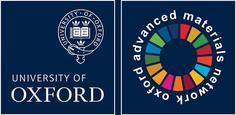The spatial control of optical absorption provided by two-photon excitation has led to tremendous advances in microscopy and microfabrication. Medical applications of two-photon excitation in photodynamic therapy have been widely suggested, but thus far have been rendered impractical by the low two-photon cross-sections of photosensitizer drugs (which are compounds taken up by living tissues that become toxic on absorption of light). The invention of efficient two-photon activated drugs will allow precise three-dimensional manipulation of treatment volumes, providing a level of targeting unattainable with current therapeutic techniques. Here we present a new family of photodynamic therapy drugs designed for efficient two-photon excitation and use one of them to demonstrate selective closure of blood vessels through two-photon excitation photodynamic therapy in vivo. These conjugated porphyrin dimers have two-photon cross-sections that are more than two orders of magnitude greater than those of standard clinical photosensitizers. This is the first demonstration of in vivo photodynamic therapy using a photosensitizer engineered for efficient two-photon excitation. © 2008 Macmillan Publishers Limited. All rights reserved.
Materials by design for sustainable solutions in the energy, medical, transport, and engineering sectors




